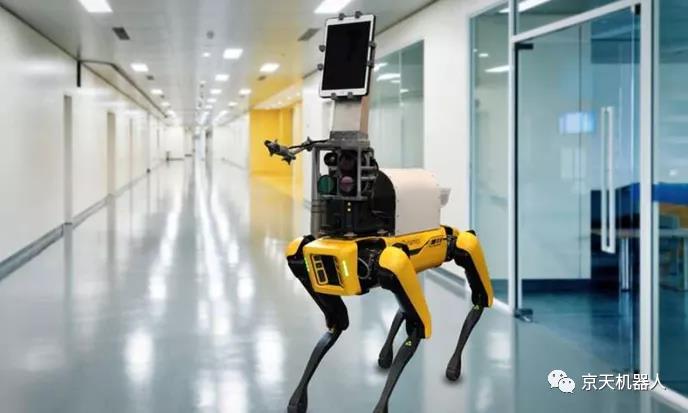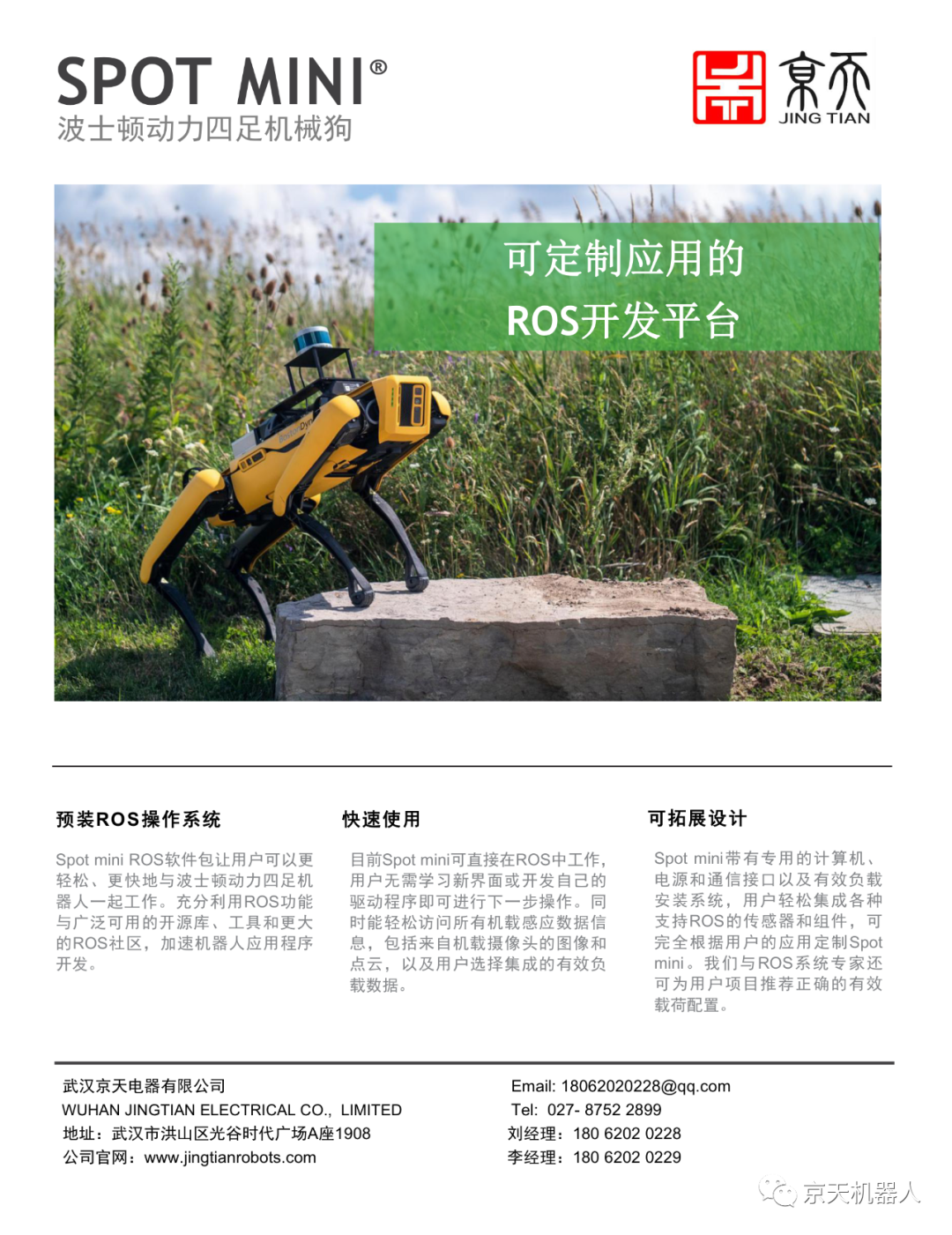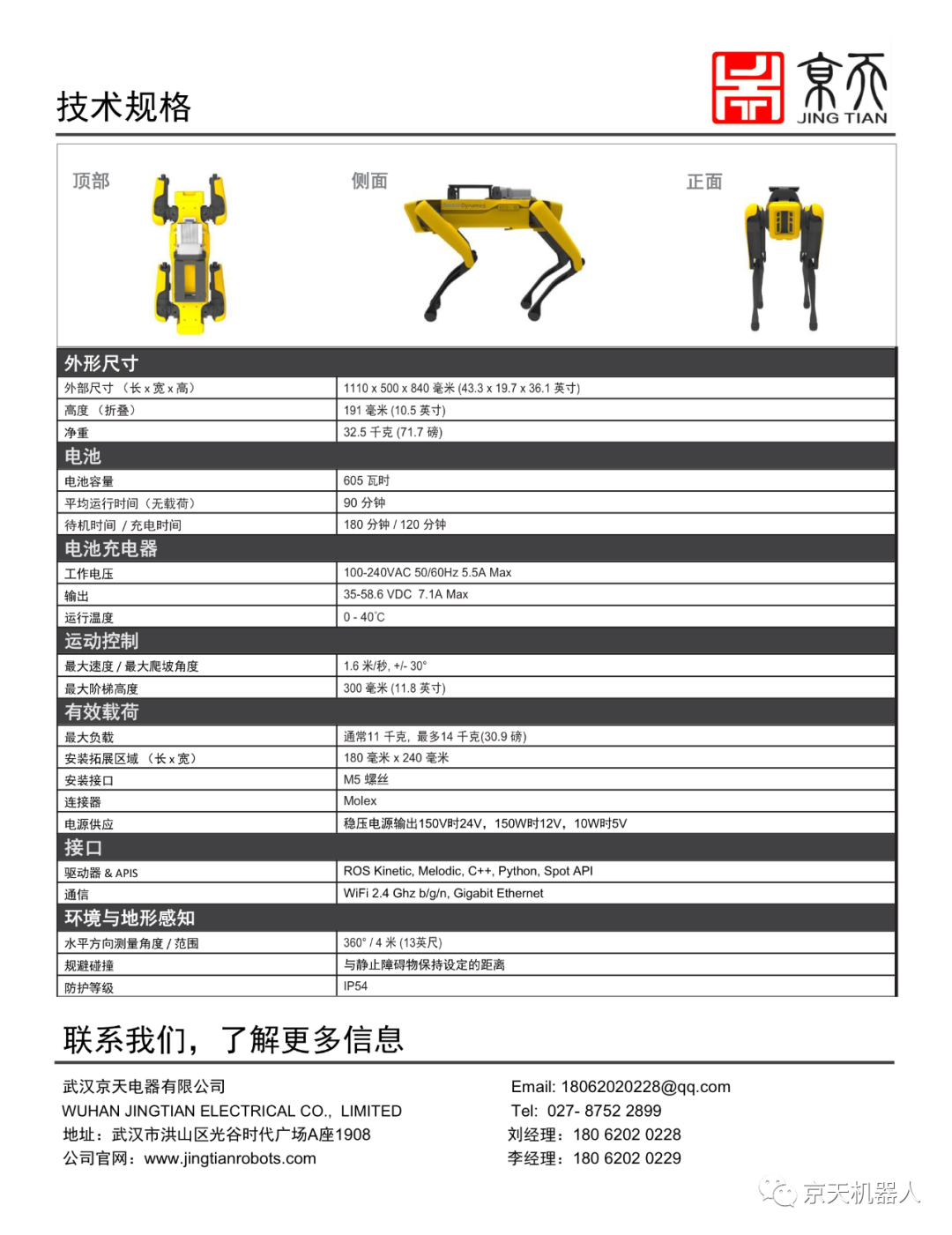
Researchers from the Massachusetts Institute of Technology and Broadway Women's Hospital hope to reduce the risk of COVID-19 to medical staff by using robots to remotely measure the vital signs of patients. In the coronavirus epidemic, the most dangerous part of the work of medical staff is to care for people with COVID-19 symptoms. Researchers at MIT and Brigham and Women's Hospital hope to reduce the risk of exposure by using robots to remotely measure the vital signs of patients.
A robot controlled by a handheld device can carry a tablet computer, allowing the doctor to ask about the patient's symptoms without being in the same room.
Henwei Huang, a postdoctoral fellow at the Massachusetts Institute of Technology, said: "In the field of robotics, one of our goals is to use automation and robotics to rescue people from dangerous jobs." The risk of direct patient contact."
The researchers used four cameras mounted on a dog-shaped robot developed by the Boston company to measure the skin temperature, respiration rate, pulse rate and blood oxygen saturation of healthy patients within a distance of two meters. They are now planning to measure patients with symptoms of COVID-19. Serving at Brigham and Women’s Hospital, the senior researcher, Giovanni Travoso, an assistant professor of mechanical engineering at the Massachusetts Institute of Technology and an expert in gastroenterology, said: “We are happy to establish a cooperative relationship between industry and academia. In the collaboration of scientists with engineering and robotics technology and clinical experts in hospitals, they bring advanced technology to the clinic."
Researchers have published a paper on TechRxiv and submitted it to peer review.
Measuring vital signs
When COVID-19 cases began to appear in Boston in March, many hospitals, including Brigham and Women’s Hospital, set up triage tents outside the emergency room to assess people with COVID-19 symptoms. The main component of this initial assessment is the measurement of vital signs, including body temperature.
MIT and BWH researchers have proposed the idea of using robotics to achieve non-contact monitoring of vital signs, so that medical staff can minimize contact with patients with potentially infectious diseases. They decided to use existing computer vision technology to measure temperature, respiration rate, pulse and blood oxygen saturation, and try to make them move.
For this, they used a robot called Spot, which can walk on all fours like a dog. Medical staff can use the handheld controller to manipulate the robot to any place where the patient is sitting. The researchers installed four different cameras on the robot-an infrared camera and three monochrome cameras that filter different wavelengths of light.
Researchers have developed algorithms that allow them to use infrared cameras to measure elevated skin temperature and breathing rate. For body temperature, the camera measures the facial skin temperature, and the algorithm correlates the temperature with the core body temperature. The algorithm also takes into account the ambient temperature and the distance between the camera and the patient, so it can be measured from different distances in different weather conditions and still be accurate.
The measurement results of the infrared camera can also be used to calculate the patient's breathing rate. When a patient wears a mask to breathe in and out, their breath will change the temperature of the mask. By measuring temperature changes, researchers can calculate the patient's breathing rate.
Three monochrome cameras filter light of different wavelengths-670, 810 and 880 nanometers. These wavelengths allow researchers to measure the slight color change that occurs when hemoglobin in blood cells combines with oxygen and flows through blood vessels. The researchers’ algorithm uses these measurements to calculate pulse rate and blood oxygen saturation.
Continuous monitoring
In this study, the researchers took measurements on healthy volunteers, and they are now planning to test their robotic method on people showing symptoms of COVID-19 in the hospital emergency room.
In the short term, the researchers plan to focus on triage applications, and in the long term, they envision the deployment of robots in patient wards. This will allow the robot to continuously monitor the patient and also allow the doctor to examine the patient through a tablet computer without having to enter the room. Both applications need to be approved by the U.S. Food and Drug Administration.
Seeing such a grounded and powerful application of Boston Dynamics SOPT, is your heart moved?
Wuhan Jingtian, the domestic SPOT purchase channel, is now open, and you are welcome to inquire.



Donghu Robot Laboratory, 2nd Floor, Baogu Innovation and Entrepreneurship Center,Wuhan City,Hubei Province,China
Tel:027-87522899,027-87522877
Robot System Integration
Artificial Intelligence Robots
Mobile Robot
Collaborative Robotic Arm
ROS modular robot
Servo and sensor accessories
Scientific Research
Professional Co Construction
Training Center
Academic Conference
Experimental instruction
Jingtian Cup Event